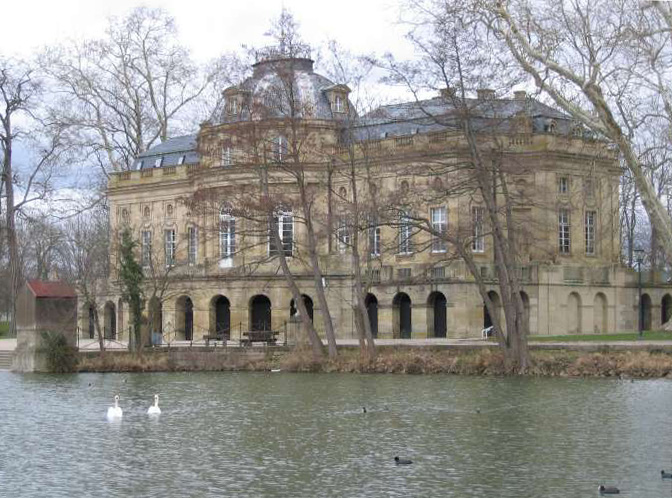Nikolaus Friedrich Von Thouret on:
[Wikipedia]
[Google]
[Amazon]
 Nikolaus Friedrich von Thouret (born
Nikolaus Friedrich von Thouret (born
 Nikolaus Friedrich von Thouret (born
Nikolaus Friedrich von Thouret (born Ludwigsburg
Ludwigsburg (; Swabian: ''Ludisburg'') is a city in Baden-Württemberg, Germany, about north of Stuttgart city centre, near the river Neckar. It is the largest and primary city of the Ludwigsburg district with about 88,000 inhabitants. It is s ...
, 2 June 1767; died Stuttgart, 17 January 1845) was a German architect
An architect is a person who plans, designs and oversees the construction of buildings. To practice architecture means to provide services in connection with the design of buildings and the space within the site surrounding the buildings that h ...
and designer
A designer is a person who plans the form or structure of something before it is made, by preparing drawings or plans.
In practice, anyone who creates tangible or intangible objects, products, processes, laws, games, graphics, services, or exp ...
.
Life and work
From 1778 to 1788 he was educated at theHohe Karlsschule
Hohe Karlsschule (''Karl's High School'') was the strict military academy founded by Karl Eugen, Duke of Württemberg in Stuttgart, Germany. It was first founded in 1770 as a military orphanage, but then converted into a military academy in 1773 f ...
in Stuttgart where he trained as a painter. He then attended the Académie des Beaux-Arts (1789–1790) in Paris and studied architecture in Rome (1791–1797). After returning to Stuttgart, he worked for the court in Württemberg
Württemberg ( ; ) is a historical German territory roughly corresponding to the cultural and linguistic region of Swabia. The main town of the region is Stuttgart.
Together with Baden and Hohenzollern, two other historical territories, Württ ...
as a designer-draughtsman and decorative painter. An early architectural project was the Gothic Revival church of Hohenheim (1797; re-erected 1803 at Monrepos, Ludwigsburg
Ludwigsburg (; Swabian: ''Ludisburg'') is a city in Baden-Württemberg, Germany, about north of Stuttgart city centre, near the river Neckar. It is the largest and primary city of the Ludwigsburg district with about 88,000 inhabitants. It is s ...
; ruin since the 1940s. With the assistance of Goethe
Johann Wolfgang von Goethe (28 August 1749 – 22 March 1832) was a German poet, playwright, novelist, scientist, statesman, theatre director, and critic. His works include plays, poetry, literature, and aesthetic criticism, as well as tr ...
, whom he met in Stuttgart in 1797, Thouret was commissioned to design the décor of the Schloss
''Schloss'' (; pl. ''Schlösser''), formerly written ''Schloß'', is the German term for a building similar to a château, palace, or manor house.
Related terms appear in several Germanic languages. In the Scandinavian languages, the cognate ...
in Weimar
Weimar is a city in the state of Thuringia, Germany. It is located in Central Germany between Erfurt in the west and Jena in the east, approximately southwest of Leipzig, north of Nuremberg and west of Dresden. Together with the neighbouri ...
and to renovate the court theatre there (1798–1800). On his return to Stuttgart, Thouret was appointed court architect to Frederick II, Duke of Württemberg (1754–1816), in 1799. He undertook numerous building projects, nearly all in the Neo-classical style
Neoclassical architecture is an architectural style produced by the Neoclassical movement that began in the mid-18th century in Italy and France. It became one of the most prominent architectural styles in the Western world. The prevailing style ...
, in Stuttgart and Ludwigsburg
Ludwigsburg (; Swabian: ''Ludisburg'') is a city in Baden-Württemberg, Germany, about north of Stuttgart city centre, near the river Neckar. It is the largest and primary city of the Ludwigsburg district with about 88,000 inhabitants. It is s ...
where the dukes had their official residences; these schemes took account of the increasing need for prestigious buildings in Württemberg
Württemberg ( ; ) is a historical German territory roughly corresponding to the cultural and linguistic region of Swabia. The main town of the region is Stuttgart.
Together with Baden and Hohenzollern, two other historical territories, Württ ...
, following its elevation in 1806 to the Status of a kingdom, with the Duke becoming its first king. As well as renovations to the royal palaces, designs for park furniture and ephemeral festival constructions, several theatre projects were entrusted to Thouret, and he also produced furniture designs for the interior decoration of the palaces. In addition to his work for the Court, Thouret designed many private buildings, especially in Stuttgart (e.g., Wohnhaus Erbe, Königstrasse, 1806; Wohnhaus Kohl, Friedrichstrasse, 1817). After the death of the King in 1816, Thouret was dismissed in 1817 from his post as court architect. He was appointed Professor of architecture, but because of delays in the proposed establishment of a professional academy his potential as a teacher of architecture was never developed. Instead, he continued to be given design commissions and was involved in almost all the foremost architectural projects undertaken in Stuttgart to the 1830s (e.g., Katharinenhospital, 1827; Hoftheater, 1833). Among the few Works by Thouret that have been preserved are his schemes for the interior decoration of Weimar Palace (begun 1789) and Ludwigsburg Palace
Ludwigsburg Palace, nicknamed the "Versailles of Swabia", is a 452-room palace complex of 18 buildings located in Ludwigsburg, Baden-Württemberg, Germany. Its total area, including the gardens, is the largest palatial estate in the country. T ...
(begun 1805), the theatre (1812) at Ludwigsburg Palace, the assembly hall and pump room (begun 1825) in Bad Cannstatt and the Eberhard baths (begun 1838) in Wildbad.
Further reading
* Paul Faerber, ''Nikolaus Friedrich von Thouret'', Stuttgart 1949 {{DEFAULTSORT:Thouret, Nikolaus Friedrich von 19th-century German architects German designers 1767 births 1845 deaths Architects from Stuttgart People educated at the Karlsschule Stuttgart People from Ludwigsburg